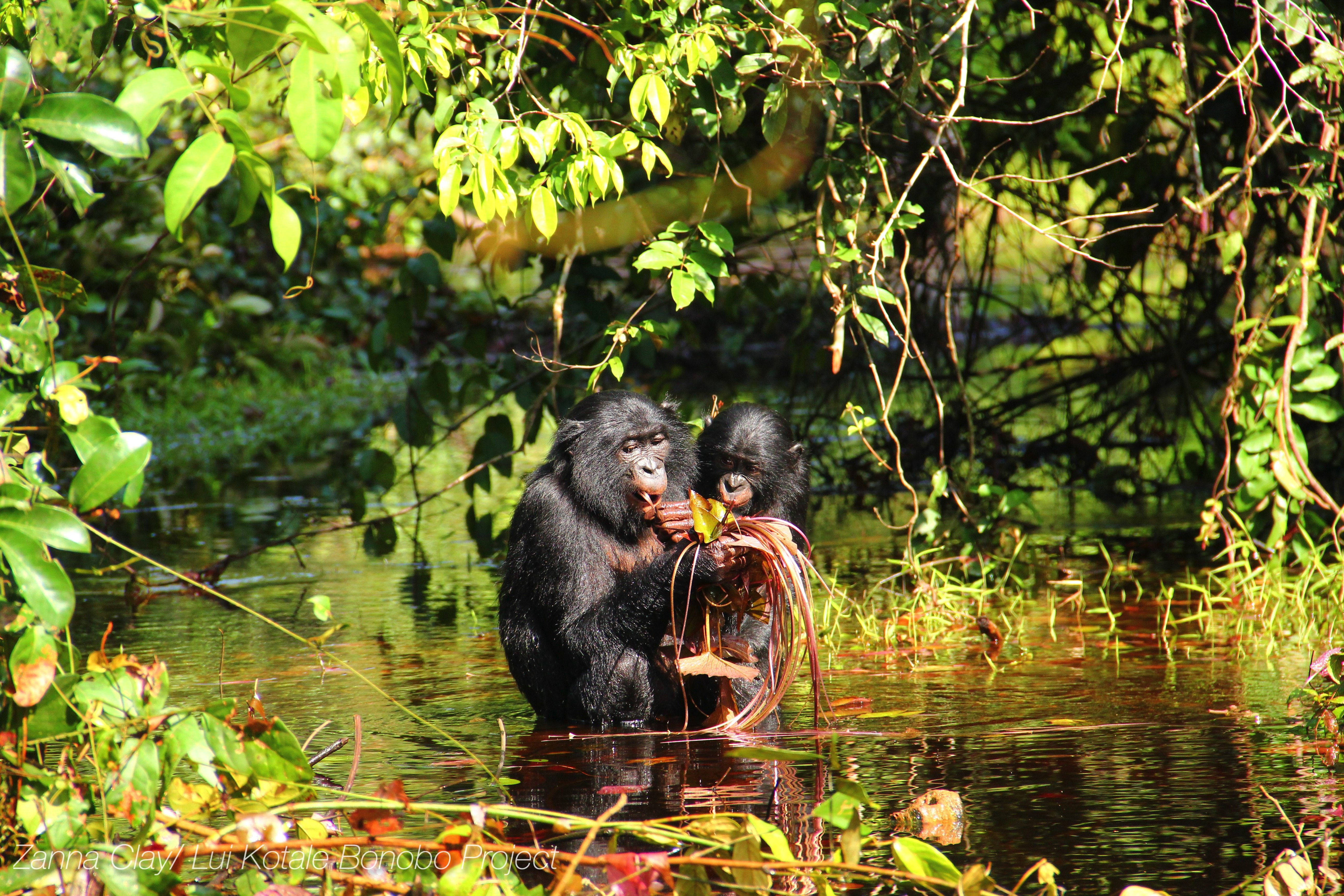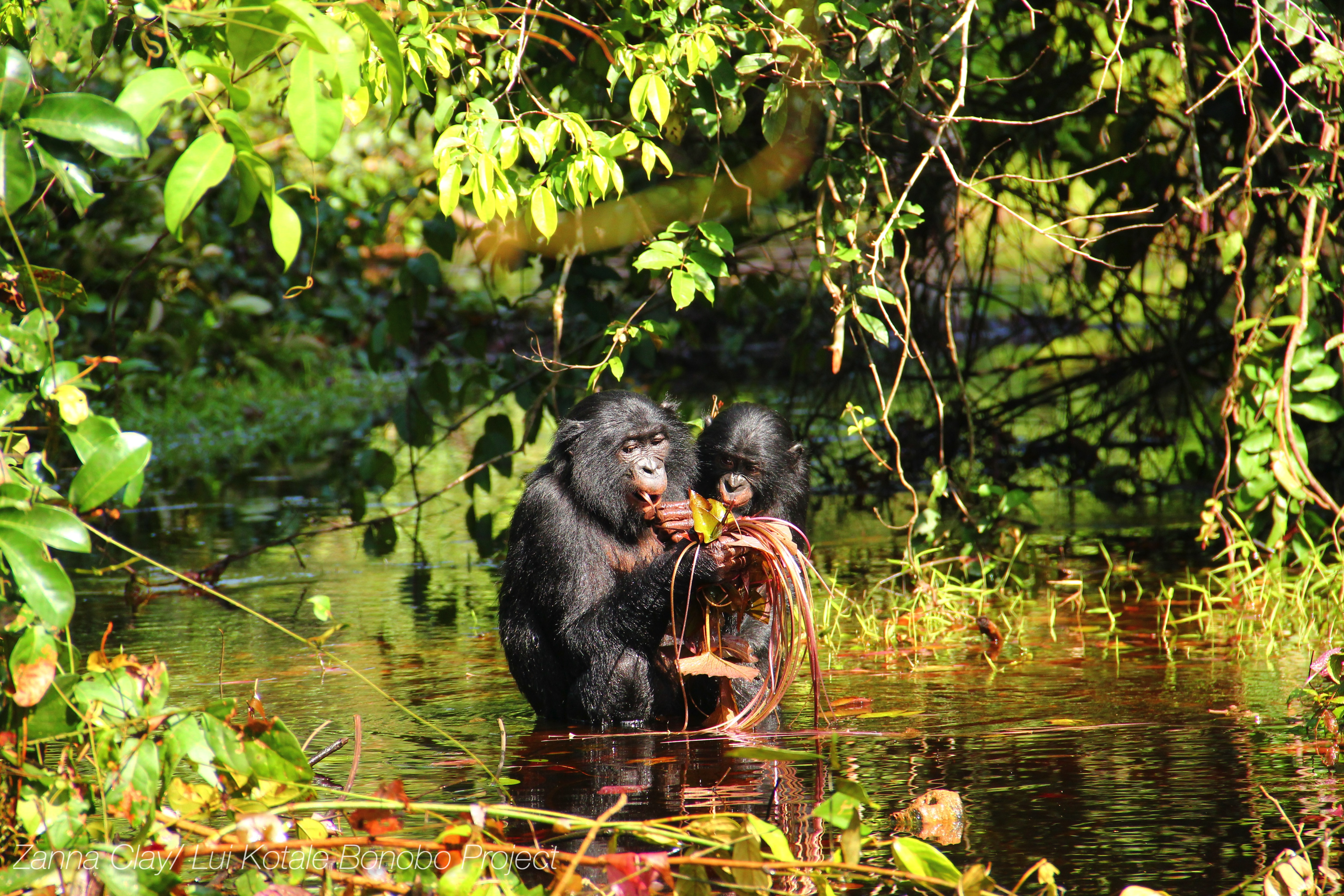Bonobo Communication: Discovering Their Unique Language
Bonobo communication provides exciting insights into the evolution of language and animal communication. Recent research shows that these remarkable primates possess a level of vocalization complexity similar to that of humans, suggesting an advanced social structure. By employing techniques like compositionality, bonobos can form unique combinations of sounds that convey intricate social scenarios, highlighting the importance of social bonds in animals. This discovery prompts us to reevaluate our understanding of language evolution and the potential for communication systems in non-human species. Clearly, bonobo vocalizations are more than mere sounds; they represent a sophisticated form of expression that connects individuals within their social groups.
The way in which bonobos convey messages sheds light on the dynamics of animal interaction and the subtleties of their social networks. Terms such as vocal expressions and sound combinations underscore the versatility with which these primates communicate complex ideas. By exploring the nuances of bonobo vocalizations, researchers can better understand the comparative aspects of linguistic development across species. Furthermore, analyzing social interactions among bonobos offers a window into the roots of communication, emphasizing the role of social bonds in the evolution of sophisticated communicative practices. This perspective not only highlights bonobos’ unique vocal abilities but also enriches our comprehension of animal communication in general.
Understanding Bonobo Communication
Bonobos are renowned for their sophisticated methods of communication which closely resemble human vocalizations. Their rich array of sounds, including peeps, yelps, and whistles, plays a critical role in social interaction and organization. Recent studies highlight how these vocalizations allow bonobos to express complex emotions and situations, reminiscent of human language dynamics. This non-verbal communication is essential for maintaining social bonds and coordinating activities within their groups, showcasing a deeply rooted evolutionary connection between vocal complexity and social structures.
The study conducted by researchers from Harvard and Zurich utilized innovative approaches to analyze bonobo vocalizations in depth. By documenting reactions to various calls, they established correlations between specific sounds and social cues, leading to what could be seen as a ‘dictionary’ of bonobo communication. This systematic investigation into animal communication furthers our understanding of how such vocal patterns not only serve immediate needs but also strengthen social ties within the species.
Bonobo Vocalization and Its Implications
The findings on bonobo vocalization suggest that these animals are capable of using sound combinations that convey distinctive meanings, similar to how humans utilize language. The researchers discovered instances of what can be described as compositionality in bonobo calls, where combinations of sounds create new implications based on social contexts. This level of sophistication in their communication hints at evolutionary precursors to human language, suggesting a timeline where both species may have shared communicative features.
Furthermore, bonobos often engage in vocalizations with contextual nuances, reflecting emotional states or social dynamics, such as alerting group members of danger or coordinating movements. Their ability to adaptively use their vocal repertoire in alignment with their social environment underscores the importance of vocal communication in developing and maintaining intricate social bonds, a hallmark of intelligent species.
The Evolution of Language Through Animal Communication
The study of bonobos and their communication habits prompts important questions about the evolution of language. As highlighted by researchers, understanding the vocal systems of bonobos can provide significant insights into the roots of human language. What we observe in bonobos—using combinations of sounds to convey complex meanings—may reflect the early stages of language development in our evolutionary history. This realization positions bonobos as key players in the narrative of language evolution.
In tracing the lineage of language, one must consider the interplay between social and vocal complexity. Bonobos exhibit social structures that require intricate communication for coordination and relationship maintenance, paralleling the human experience. Investigating these interrelationships can illuminate why language, as we know it, has evolved in specific ways, and how other species may mirror these developments through distinct yet analogous forms of communication.
Compositionality in Bonobo Communication
Compositionality is a vital feature of language that allows for the combination of simpler elements into more complex meanings. In recent research, bonobo vocalizations exhibited signs of this feature, as calls could be mixed and matched to form new phrases that conveyed different meanings. This quality not only highlights the cognitive capabilities of bonobos but also aligns them closely with human linguistic abilities, potentially providing insights into the early development of language.
The implications of discovering compositionality in bonobo communication extend beyond mere curiosity. It demonstrates that the capacity for language could be far older than previously assumed, shared between humans and their primate relatives. By examining how bonobos utilize these complex vocalizations, researchers can better understand the evolutionary pathways that have shaped communication in diverse species, thus shedding light on the origins of human language and our unique cognitive abilities.
Social Bonds in Bonobos and Their Communication
Social bonds among bonobos have been shown to influence their communication strategies significantly. The harmonious nature of bonobo society, characterized by cooperative interactions and emotional depth, necessitates a robust system of communication to navigate their social landscape. Bonobos strengthen their relationships through vocalizations that convey trust, affection, and social cues, serving as essential tools for group cohesion.
The ability to communicate effectively allows bonobos to coordinate group movements and maintain social ties over distance, reflecting the sophistication of their social structures. This reliance on vocal communication not only fosters a strong community but also underscores the evolutionary advantages of maintaining social bonds through complex communicative behaviors, marking them as a significant point of interest in the study of animal societies.
The Role of Context in Bonobo Vocalizations
Context is a crucial element in understanding bonobo vocalizations and their meanings. Researchers have noted that the same vocal sound could imply different meanings depending on the situation—emphasizing the environmental and social cues that influence communication. For instance, a soft peep may denote a social greeting in one context, while signaling alarm in another, showcasing the flexibility and adaptive nature of bonobo communication.
This contextual variability reflects a deep understanding of social dynamics among bonobos, paralleling human language’s reliance on context for meaning. The way bonobos adjust their sounds in reaction to changing circumstances denotes cognitive sophistication and an emotional intelligence that allows them to thrive in their complex social structures.
Implications for Understanding Animal Communication
The structured approach to studying bonobo communication has valuable implications for broadening our understanding of animal communication as a whole. By creating a detailed ‘dictionary’ of bonobo calls and their meanings, researchers have paved the way for comparative studies across different species, potentially altering how we interpret animal interactions. This method allows for a systematic analysis that can reveal patterns and structures in vocal systems among various animals.
This research not only demonstrates the complexity found within bonobo communication but also highlights the importance of recognizing similarities among diverse species’ communication methods. Such findings could transform how we approach studies on animal communication, prompting researchers to appreciate the nuances that exist within these systems and rethink previous assumptions of language as an exclusive human trait.
Future Directions in Bonobo Communication Research
Looking ahead, further research on bonobo communication could uncover even more about their social behaviors and vocal structures. As scientists develop more refined tools and methodologies, the potential to gain deeper insights into how bonobos use their vocalizations to navigate social relationships becomes more feasible. Exploring these realms could not only enrich our knowledge of bonobos but also shed light on the evolution of communication in primates and beyond.
Future studies may employ advanced technologies, such as machine learning, to analyze sound patterns and contextual usage in greater detail. This will enhance our understanding of how different elements of bonobo communication interact with each other and influence social dynamics, providing significant contributions to both linguistic and ethological fields.
Comparative Communication Studies: Bonobos and Chimpanzees
Investigating the communication systems of bonobos alongside those of their close relatives, chimpanzees, can provide critical insights into the evolutionary pathways of language. While both species show instances of sophisticated vocalization, bonobos, characterized by their matriarchal societies and social cooperation, might present different vocal patterns compared to chimpanzees. Understanding these differences will allow researchers to map out how these diverse social structures affect communication.
Moreover, studies comparing the vocalizations of bonobos and chimpanzees could highlight unique adaptations within each species’ communication. It is essential to examine how environmental factors, social organization, and evolutionary history shape these vocal signals to gain a holistic view of animal communication and its correlations with language evolution.
Frequently Asked Questions
What role does bonobo vocalization play in communication among bonobos?
Bonobo vocalization is crucial for communication, allowing these primates to convey complex social situations, coordinate group movements, and express emotions. Researchers have found that bonobos use a variety of sounds, including whistles and peeps, to signal different messages, indicating a sophisticated form of animal communication.
How does the study of bonobo communication impact our understanding of language evolution?
The study of bonobo communication suggests that the roots of language may predate humans, highlighting the evolutionary link between vocal complexity and social complexity. Bonobos utilize compositionality, forming phrases from vocalizations to share information, which parallels early human language development.
What findings did researchers discover about the compositionality of bonobo communication?
Researchers revealed that bonobos exhibit compositionality in their vocalizations, using combinations of calls to create meanings similar to word compounds in human languages. This finding highlights the intricate social bonds among bonobos and their ability to communicate nuanced information through their vocal repertoire.
How do social bonds influence bonobo vocalization and communication?
Social bonds in bonobos significantly influence their vocalization patterns. The complexity of their social interactions necessitates a sophisticated communication system that allows individuals to maintain relationships over distances, showcasing the evolutionary importance of effective animal communication.
What methods were used to study vocalization in bonobos?
Researchers employed methods from human linguistics, observing and categorizing vocalizations in relation to contextual features over several months. This systematic approach enabled them to analyze the meanings of different calls, ultimately creating a ‘dictionary’ of bonobo vocalizations for the first time.
Can we find similarities between bonobo communication and human language?
Yes, there are notable similarities. Both bonobos and humans utilize compositionality, allowing for the creation of novel phrases and nuanced communication. This suggests that the ability to construct complex messages may have evolved early in our common ancestry.
What are the implications of bonobo vocalization research for animal communication studies?
The implications are significant, as this research on bonobo vocalization reveals the potential for structured communication systems in other species, enriching our understanding of animal communication dynamics and the evolutionary roots of language.
| Key Points |
|---|
| Mia, a young female bonobo, vocalizes to communicate with distant members of her group, illustrating the species’ complex communication. |
| Research from the University of Zurich and Harvard shows bonobos use a system of combinations in vocalizations that resembles human language structures. |
| The study highlights the concept of ‘compositionality,’ allowing bonobos to convey complex social situations through vocalizations. |
| Bonobo vocalizations include types such as peeps, yelps, and whistles, each serving different communication purposes within social contexts. |
| The research documented over eight months and concluded that bonobos possess a sophisticated communication system indicative of their complex social bonds. |
| Similar communication complexities are also observed in chimpanzees, suggesting evolutionary links in social behavior and communication across species. |
Summary
Bonobo communication is a fascinating subject that reveals much about the evolutionary origins of human language. This research indicates that bonobos utilize vocalizations with a structure similar to that of human language, suggesting that the roots of language extend back before the advent of modern humans. The researchers’ findings underscore the importance of vocal complexity in social interactions among bonobos, showcasing how their advanced communication capabilities are crucial for maintaining social bonds. Overall, the study sheds light on the impressive communicative abilities of bonobos, encouraging further exploration into animal communication.

